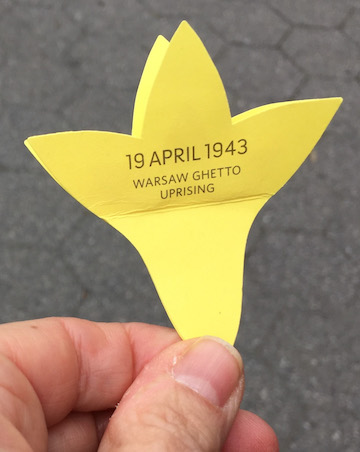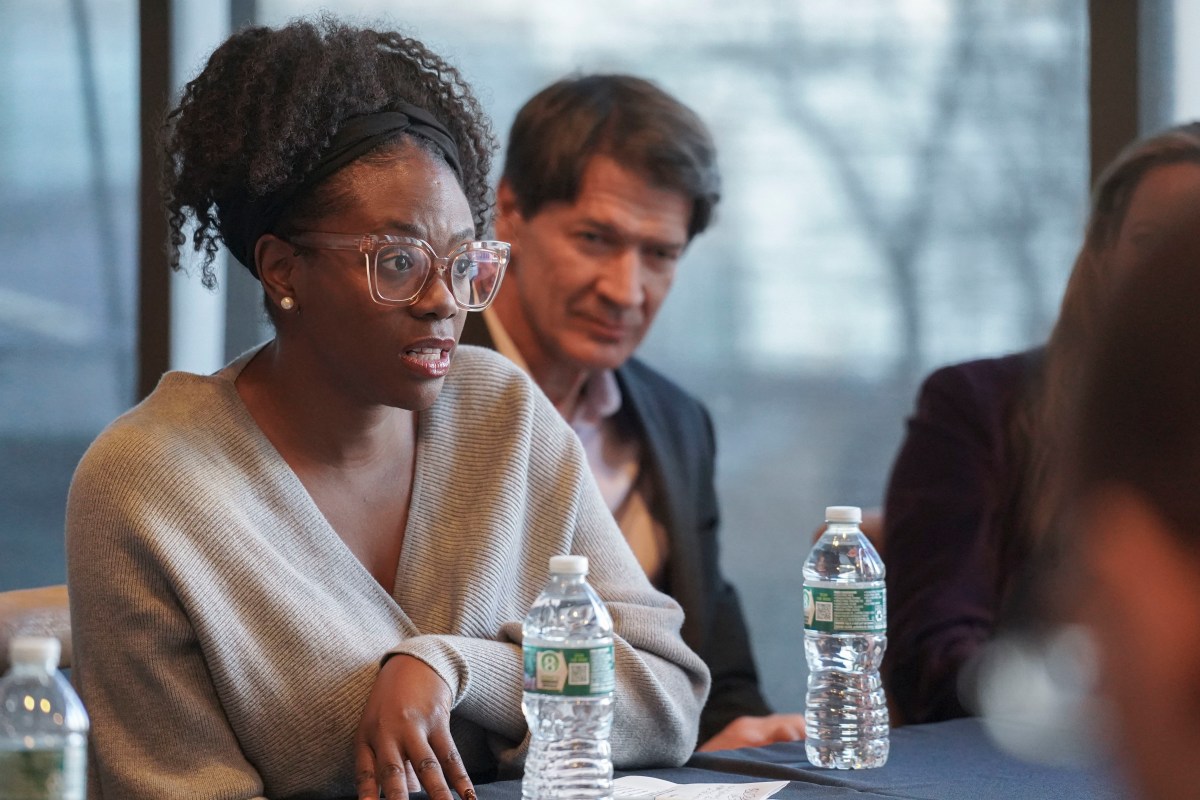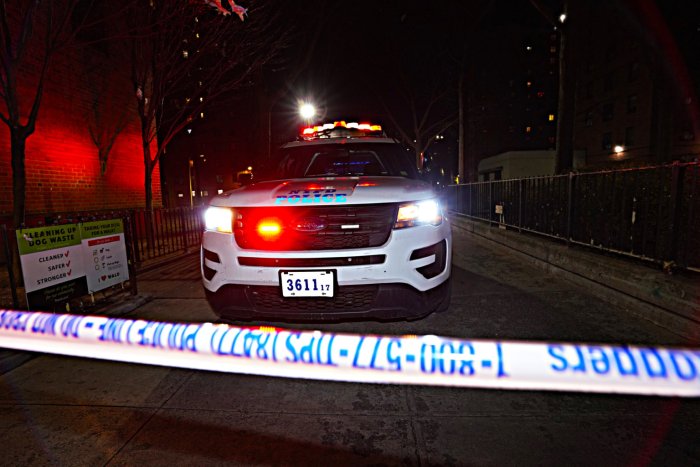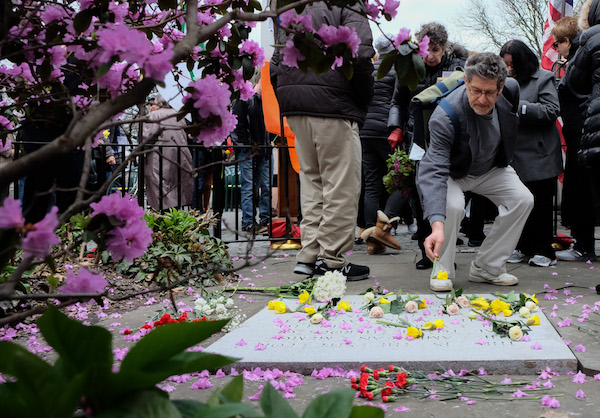
BY TEQUILA MINSKY | Inside Riverside Park at West 83rd Street, petals from blooming pink azaleas were scattered on an easily overlooked embedded plaque. But, at an adjacent plaza, among more than 125 people who braved a blustery spring day, the sentiments etched in cement were not irrelevant.
Gathered at “der shteyn,” (Yiddish for “the stone”) and bundled against the cold, devoted New Yorkers commemorated the 74th anniversary of the Warsaw Ghetto Uprising, which began April 19, 1943. This year’s commemoration came on April 21, two days after the anniversary, which fell on the Sabbath.
Even as the Holocaust survivor generation has become smaller through attrition, resistance efforts against the Nazis continue to be remembered at this annual event.
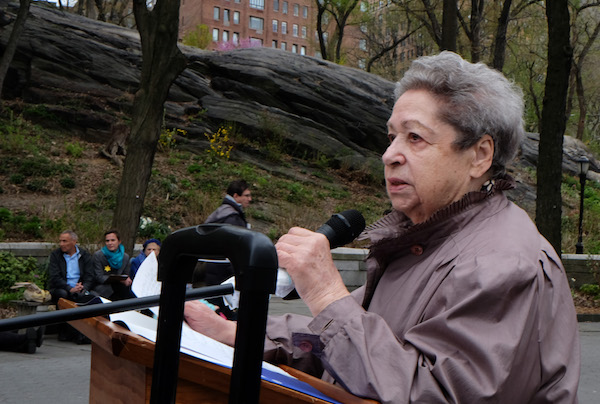
“Some historians say that the 70th anniversary is the last time anything is ever remembered by people who were actually affected or took part,” said Shane Baker, executive director of the Congress for Jewish Culture, in his welcoming remarks. “But for the 74th anniversary, we have a larger crowd of people than any time in recent memory.”
He added, “People feel it’s more important to remember now than at any other time in recent history, because of the national and world situation. Again we have a dictator using poison gas against his own people. Again we have ‘show’ bombings that don’t much affect that dictator’s operations. And in Chechnya, we have reports of gay men being rounded up and tortured in what some are calling concentration camps… And here in our own country, the leaders are playing fast and loose with history, calling concentration camps ‘Holocaust centers’ and denying that Hitler used gas on his own people.”
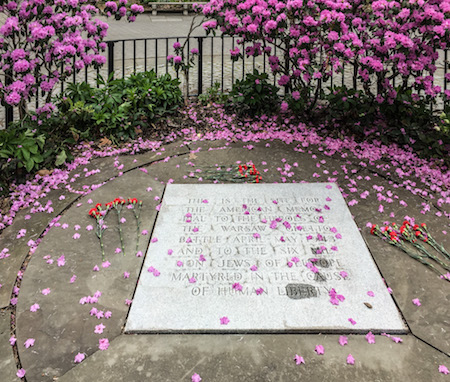
It was a powerful opening to the annual commemoration of the Warsaw Ghetto Uprising, where 220 Jews staged a heroic resistance to continued Nazi efforts to deport the Polish city’s Jewish community to concentration camps. Jews had been confined to the ghetto in November 1940 and kept in a state of near-starvation. Deportations to the death camps began in 1942 and the following spring, after news surfaced of an impending new round of deportations, the community decided to resist, holding the Nazis at bay until May 16. It was the largest organized armed rebellion within a Jewish ghetto in Nazi-occupied Europe during the Holocaust. In the end, block by block, the ghetto was burned, with an estimated 13,000 Jews murdered. Another 40,000 were sent to concentration camps.
The Riverside Park plaque — dedicated in 1947 — reads: “This is the site for the American memorial to the heroes of the Warsaw Ghetto battle April-May 1943 and to the six million Jews of Europe martyred in the cause of human liberty.”
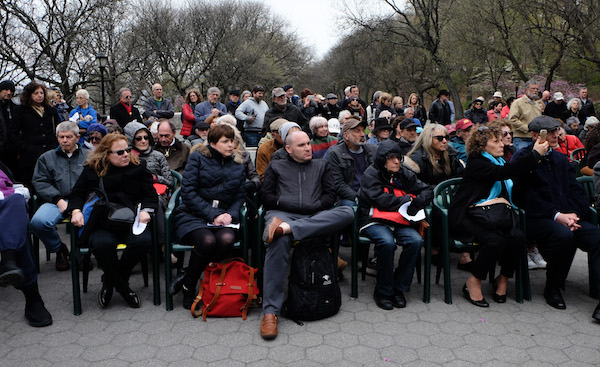
The plaque is modest, originally intended to serve as a cornerstone for a larger memorial. Buried beneath it are two boxes containing soil from two Czech concentration camps the Nazis established in Czechoslovakia — Terezin and Sered — and a scroll describing the defense of the Warsaw ghetto, composed by the Chief Rabbi of Jerusalem and written in both Hebrew and English.
“There has been much talk of a monument,” Shane remarked. “Maybe this is, as well it should be, it.”
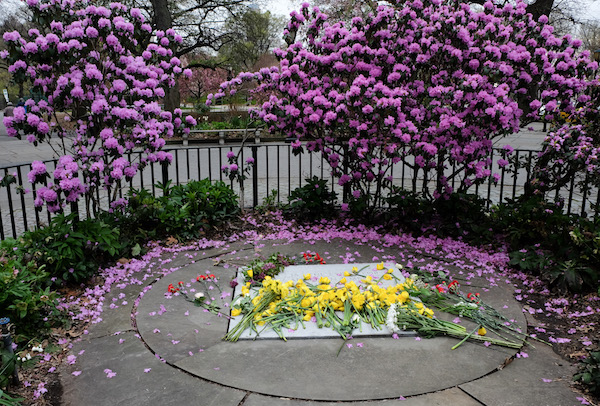
The commemoration was organized by the Congress for Jewish Culture, the Jewish Labor Bund, the Workmen’s Circle, and the Jewish Labor Committee. Maciej Golubiewski, the Polish consul general in New York, and Agata Rakowiecka, the director of Warsaw’s JCC were present, as were parks department officials including Manhattan Borough Commissioner William Castro and children from the Metropolitan Montessori School. Three of the children recounted the events of the uprising.
Chayele Palevsky, a veteran of the United Partisan Organization, which led resistance efforts in the Vilna ghetto in Poland, and Irena Klepfisz, whose father Michal Klepfisz, an uprising leader in Warsaw, was killed in the Nazi onslaught, were among the speakers.
